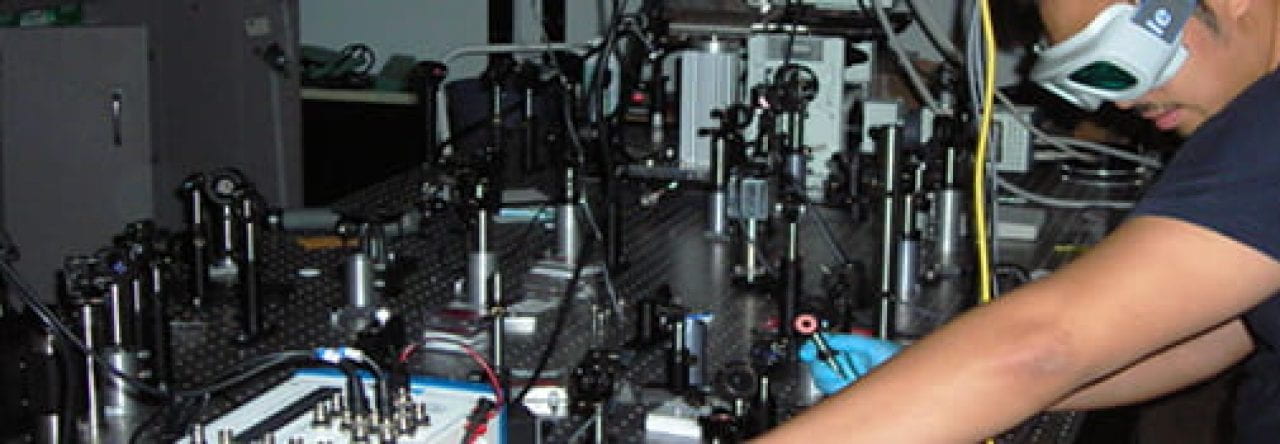
Multi-photon 3D Printing
Two photon polymerization, or TPP, is a method of 3D fabrication at the sub-micron scale. Our lab is pursuing this technique to help build complex micro scale designs used for tissue engineering, microdevices, and microfluidics. While this is an excellent tool, because of its size, there have been production limitations due to the ability to evaluate the product being constructed. It is currently time consuming and costly to produce and evaluate the product. We have been developing a real time approach to evaluating the designs in situ, which greatly reduces the time needed for production. If interested in learning more about what we are doing, read more here
Optical Tweezers
Optical tweezers (OT) has been exploited for a myriad of applications ranging from single-molecule biophysics, motor-protein functions and DNA structures, and has served as an indispensable tool in elucidating colloidal physics, lab-on-a chip, and biomedical applications. The ability of light to exert mechanical forces is based on the transfer of momentum from confined electromagnetic fields to nano- and micro-scale particles.
Traditional OT relies on a continuous wave (CW) source delivering powers on the order of MW/cm^2, thereby, limiting its ability to directly interrogate cell-cell interactions due to thermal damage and generation of toxic reactive oxygen species. . An alternative approach has stemmed form the use of ultrafast, femtosecond-pulsed lasers operating at MHz-repetition rates, where the high peak powers and short pulse durations result in nJ energies that are less deleterious to cells.
In our work, we have demonstrated the femtosecond lasers demonstrate trap stiffnesses 5X greater than that of CW lasers. Additionally, we have applied this technique of various bacteria and observed that CW lasers adversely affect cell motility, which is not seen with femtosecond lasers.
Furthermore, while OT has been capitalized as force transducers on cells, it only allows for the determination of local stiffness of cells. We aim to develop a novel optical tweezer force transducer using light-sheet microscopy to resolve the local and average mechanical elastic properties of biological tissues.
Read more about Optical Tweezers here
